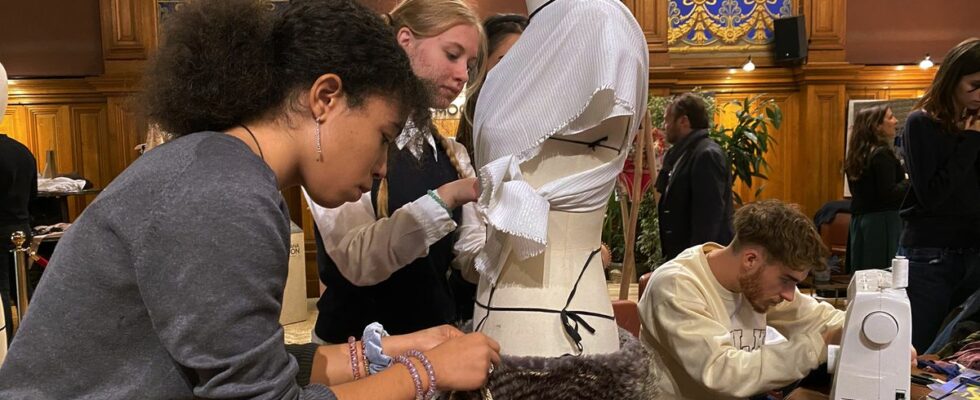“We are in the process of arranging an old T-shirt, too big and wide, into a dress”, launches Clara, in second class at the François d’Assise-Nicolas Barré high school in Monaco. Guided by a teacher from the Palmiers de Nice professional high school, she draws a line to “adjust the size” after undoing the sleeves. Along with 70 other students, she took part in the “challenge” organized by the Oceanographic Museum of Monaco on the occasion of the European Week for Waste Reduction with the theme of textiles.
“This industry generates a lot of pollution in the oceans, especially fast fashion, which consists of renewing clothes offered for sale very quickly, several times a season, or even a month, explains Serge Gobbi, event organizer and head of the department. welcome to the museum. Given that the core target is young people, we wanted to propose an action that affects them by putting them in contact with local actors already involved. »
“It will have an impact on our future”
The museum’s conference room was then transformed into a sewing workshop with scraps of fabric lying around on the tables next to a glue gun, the sewing machine, scissors and a tape measure. For this “upcycling challenge”, students must make clothing on the theme of “fleece” from recycled materials.
Near a mannequin, Arina, 15, examines the rendering of her fur skirt, which she sewed by hand. “I buy a lot of clothes and I love fashion, except that I don’t know anything about it. I’m very happy to be here because it’s an event that makes us participate, unlike conferences where we are passive. There, we act and in addition, we learn techniques that will serve us for the next time when we want to throw a habit. »
A little further on, Maiyan and Stella, both with a vocational baccalaureate in fashion, are working on a top they want with “frilly” reminiscent of a “bear”. “While showing what we know how to do outside of class, we prove that fashion can be linked to ecology,” says the first 18-year-old student. She adds: “At the beginning of my training, I did not imagine that when I launched my brand, it would be eco-responsible. But now it’s obvious. And this kind of event will have an impact on all of us, on our future choices, that’s for sure. »
“We all have a responsibility as citizens towards global warming”
But this revolution and these realizations are recent in the industry. Faouzia Hammadi, one of the teachers at the professional high school in Nice, develops: “We may have started hearing about ecology twenty-five years ago in fashion, but it entered establishments and classes there. only two or three years ago. Today, these young people are our stylists of tomorrow and they need to immerse themselves in environmental issues. »
And to inspire them, a dozen local and committed creators were also invited to this awareness campaign. Among them, Inès Bensalah, 24, founder of the brand Inessa Creations, “luxury ready-to-wear”. “We are part of this involved generation that boycotts companies that do not respect the environment and human rights and that passes on to our elders,” she says. When I started, I was 20 years old, and for me, it just seemed natural that the high end could go with eco-sustainability. We all have a responsibility as citizens towards global warming. »
Make these students “consumers”
She shows the example to the students that it is possible to “create beautiful fashion with values”. His clothes are made from recycled material intended for disposal, with organic paint, recycled plastic and also “apple leather and seaweed”.
Thus, these challenges allow “to explain how to use waste to make clothes, create a responsible brand but also give advice on how to revalue what we already have”, indicates Julie Morel, CSR and sustainable development manager at the museum. She concludes: “We show students that it is possible and that they can be ‘consumers’ in this field. »

